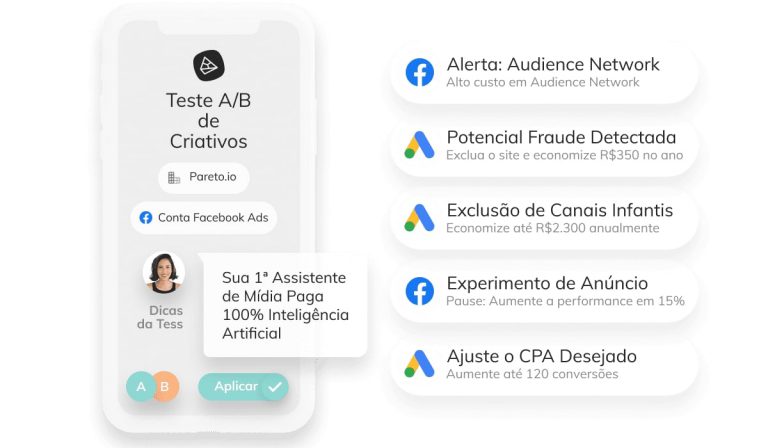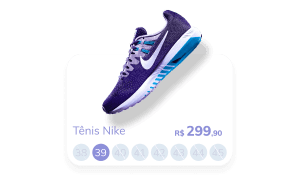
E-commerce has undergone a major transformation in recent years. Due to the Coronavirus pandemic and changing consumer habits, the market has grown rapidly.
With the expansion of the segment and increased competition, it became essential to find tools and technologies that would make strategies more efficient.
Technologies such as Artificial Intelligence, Machine Learning and Augmented Reality are already widely used today, bringing benefits to both retailers and customers.
Another technology that has contributed greatly to the development and increased productivity of e-commerce is Robotic Process Automation (RPA)..
With automation it is possible to integrate systems, monitor data in real time, improve the performance of ads by integrating with stock management, all in an automated way.
Read on and find out how e-commerce automation works, what its benefits are and which are the best options to apply to your business.
E-commerce automation: what is it and how does it work?
Automation for e-commerce aims to optimize the company's time and resources, thus transforming manual tasks into automated workflows for better results.
These workflows can carry out various automatic actions, such as triggering emails based on spreadsheet data, sending notifications to other applications, keeping track of ads along with product stock, etc.
Actions such as these can be defined in advance by the user, thus creating rules and conditions for the workflow to run smoothly, reducing repetitive and analytical tasks.
Since automation saves time, instead of performing tedious tasks, the team has more time to interact with the customer and use creativity to develop new sales strategies.
What are the advantages of automation for e-commerce?
Check out the main advantages of process automation for e-commerce.
Increased productivity
By automating repetitive activities, the company gains time to structure processes and implement strategies that can make all the difference to sales, such as guaranteeing the best services, prices and deadlines for its customers.
This raises productivity levels, as robots perform tasks automatically, ensuring greater scale and allowing humans to devote themselves to other important tasks.
Greater performance in your campaigns
With automation, you can control the stock of products and ensure that the ads you run have a variety of size, color and model options.
This increases sales conversion and generates less costs for the advertiser, who only pays for ads for the products they have in stock.
Service integration
Automation can be integrated with several different pieces of software and can also be applied to different levels of depth in the tasks of an online store.
Some examples of systems that can be integrated are those for suppliers, issuing and ordering work, stock control, email marketing platforms and online advertising.
5 Pareto RPAs to increase your e-commerce sales
A Pareto is an Artificial Intelligence and RPA company for Marketing and Sales. Over the years, it has developed automations that are used by more than 15,000 companies in 84 countries.
See the list of RPAs for e-commerce developed by Pareto that can boost your e-commerce and increase your sales.
1. Omnichannel Budget Manager
This RPA makes it much easier to manage the budgets of your paid media campaigns. Here's how it works:
- You group your campaigns by a criterion, for example, campaigns with the same objective, same stage of the funnel, location, etc;
- Then you set your budget for the month;
- Tess, our A.I., adjusts the budget every day, prioritizing the campaigns with the best performance. She can even switch budgets between Google Ads and Facebook Ads.
This way, with just a few clicks, you can automate the budget management of your campaigns, you won't stop spending, you won't go over your budget for the month and you won't make the mistake of limiting the budgets of campaigns that are performing very well.
It also helps to optimize the budget during seasonal periods, such as Mother's Day, Christmas, Valentine's Day and other good dates for commerce.
2. Dashboard for E-commerce
With this automation you can integrate data from your e-commerce platform, such as VTEX, Loja Integrada, Shopify etc, with the main paid media platforms (Facebook Ads and Google Ads), to access your metrics in a complete dashboard.
By unifying these platforms, you have a view of invoiced revenue, investment and ROAS segmented by channel. What's more, you can view this data segmented by specific campaigns.
As the data is brought to the Dashboard via API, it is possible to split the results by product or product category.
Another interesting insight is provided by viewing performance by geographical location. This way, you can find out which city or even which neighborhood brings the greatest return to your e-commerce quickly and visually.
With this information always at hand, you can plan strategies with greater precision, being able to combine your ideal persona and the purchasing power of each neighborhood, for example.
See in the video below how it works in practice, in an example applied to VTEX.
3. 1-click optimization for Facebook Ads and Google Ads
This RPA recovers your time wasted looking for optimizations to make to your paid media accounts, whether in terms of targeting, ads, budgets, etc.
That's because Tess, our A.I., searches for you automatically. Every day, she analyzes millions of pieces of data to recommend the best optimizations for you. These suggestions appear as cards in a kanban, just like the cards in Trello.
So, with just one click, you can select what you want to optimize and eliminate fraud in Display, pause low-performance ads in Facebook Ads, find and add keywords in Google Ads, among other actions.
4. Ad management with a perforated grid
Managing stock of products of different sizes takes time and organization. When we talk about combining stock management with online advertising, then the dedication needs to be even greater.
Can you imagine advertising a beautiful T-shirt that only comes in size PP? You run the risk of serving only a few people. Not to mention that products with few options available naturally have a low conversion rate.
This situation is commonly referred to as Grille. It's very common, especially when the best-selling product goes on sale and several sizes are left out of stock.
It just so happens that the paid media platforms, having identified it as a historically good performer, continue to prioritize it. This wastes a lot of money that could be directed to other products, while the product's stock is not replenished.
With this in mind, Pareto has developed this Perforated Grid Ad Management RPA, which prevents products with perforated grid sizes from being advertised so that investment is not wasted on products with low ROI.
This way, you don't have to worry about the impact of stock variations on Facebook Ads and Google Shopping Catalog campaigns. Tess integrates e-commerce directly with the media, significantly increasing the results of your campaigns.
5. Automatic Ad Creation - Pareto Adbot
Is it possible to manually create 20, 30, 40 ads and keywords on Google Ads for the main brands and best-selling products? Yes, with a little work.
But what about a marketplace or e-commerce with thousands of products or offers, with the need to target by location, display the price in the ad and use keywords with rules for each product? It would be manually impossible, wouldn't it?
For example, an airfare price comparator can automate the creation of price ads for each offer and target them to specific locations.
On the other hand, an e-commerce store for electronic parts, with thousands of models and manufacturers, can automate campaigns with different combinations of keywords and ads for each product it has.
That's what this automation is for. Pareto Adbot does all the manual work in an automated way in a matter of seconds.
It was initially developed for one of the largest services marketplaces and one of the largest travel comparison sites in Brazil. Both had new recurring offers and needed to serve them accurately, including distribution to the right regions.
With this expertise, we have developed and improved RPA to create multiple ads and keywords automatically, increasing productivity and boosting campaign results.

Pareto believes that RPAs are great tools for optimizing processes and improving e-commerce performance, but that human skills cannot be replaced.
The creative and strategic capacity of professionals is what allows them to boost business, innovate the market and create a successful brand. Take a free demo of the platform and optimize your e-commerce results.






















